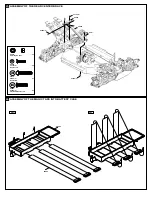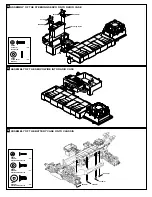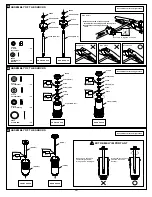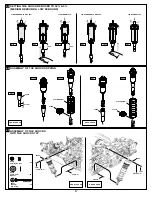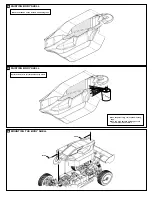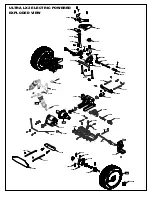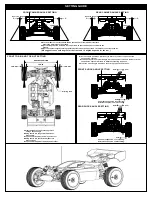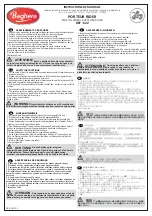
SETTING GUIDE
FRONT CAMBER ANGLE SETTING
REAR CAMBER ANGLE SETTING
Place the model car on flat surface. Raise the chassis to its maximum clearance
before the wheels leave the ground.
Adjust the length of the front and rear upper arms so that the wheels are vertical to the
ground.
Adjust the camber angle by turning the turnbuckle rod on the upper arms clockwise or counter-clockwise.
(We suggest to use zero degree for the front and 1.5 degree
for the rear.)
negative
FRONT TOE-IN AND TOE-OUT SETTING
TOE-IN
NEUTRAL POSITION
Steering Rod
-
+
Turnbuckle
-
+
Negative
Positive
-
+
Turnbuckle
-
+
Negative
Positive
TOE-OUT
TOE-OUT
Making the tie rod shorter will make front
tires toed out.
Response will be quicker and may under steer.
Adjust the length of front steering rod to
change the toe angle.
Making the tie rod longer will make front
tires toed in.
Response will be slower and may over steer.
Different shock positions will result in firmer or softer response of the
suspension system.
Install the shock in an inward angle will cause softer rebound. Softer or firmer
suspension system will lead to different steering response.
Adjust the shock angle positions according to track conditions.
FRONT SHOCK ANGLE SETTING
Firm front suspension, less steering.
Soft front suspension, more steering.
1 2 3
Soft
Firm
12
Soft
Firm
REAR SHOCK ANGLE SETTING
1 2
Firm rear suspension, over steering.
Soft rear suspension, under steering.
Soft
Soft
Firm
Firm
1 2 3
3

